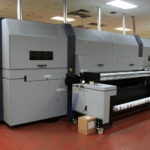The Difference Between Approaches To Print Publishing
One of the decisions you must make as an author is whether to go with print-on-demand (POD) or a print run. Let’s define what these mean so that you can make an informed choice.
If you are publishing via a POD platform, this will mean that your book will be sold nearly entirely online. When a customer buys your book on the website, a copy is printed and distributed to the customer.
This type of printing was developed so that older titles in backlists could be kept in print without having to perform a print run and store lots of physical books.
It’s now used for low-cost, flexible distribution for independent authors and digital publishers.
The advantages of this approach are that:
- It’s better for the environment – when publishers produce a large print run, unsold books that are not discounted may end up in a landfill. This wastes several resources.
- POD requires no upfront investment – in addition to the cost of printing books, warehouse space to store them costs money too. If you don’t have to stock books, you can eliminate those costs.
- POD platforms take care of logistics – not sure how to accept payments in multiple currencies and ship your books around the world? By choosing a POD platform, you can have this taken care of for you.
The disadvantage of POD is that there are costs incurred each time a book is printed. Still, the advantages can outweigh this.
So when is it better to have a print run?
- Larger print runs become cheaper – if you know that you will be selling a large number of books or you need a lot of books for book signings, it may be possible to save money with a large print run. The cost per book goes down with larger print runs.
- Unusual formats and requirements – the results of POD and offset printing for print runs are almost indistinguishable. POD caters for typical formats and paper types, however, so if the book requires an unusual size, or includes images or high-quality insets, you may achieve better results with a traditional print run.
- Books can be sold online and to brick-and-mortar stores – if you have a pile of physical books, you can work on getting traditional bookstores to stock them. Many traditional bookstores will order books printed by IngramSparks, but other POD platforms lack the quality and financial incentives to make this a viable option.
When you’re deciding between going with a digital or a traditional publisher, understanding the difference will save time and money and avoid a lot of frustration. One is not better than the other. Which you choose depends on your needs and the needs of your readers.
